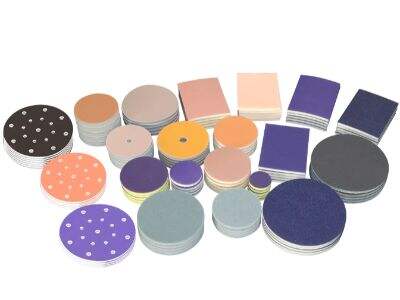This kind of tool is specifically the sandpaper that helps to smooth and shine a surface. It can be deceptively simple, but using it effectively takes practice and learning. Learn How To Use Sandpaper Like a Pro | Essential Tips Aimchamp will take you through all the details about using some sandpaper correctly today;
Choosing the Right Sandpaper
Choose what kind of sandpaper to use The first thing you want to consider when selecting your sandpaper is the type. Grit describes the roughness of sandpaper. The grit indicates how coarse or fine the sandpaper is. A low grit sandpaper is a very rough sandpaper which makes it perfect for stripping old paint or rust from surfaces. That sandpaper really works fast. A sandpaper with high grit is a less rough paper. This type would be one you when to close up a surface and get it nice, super shiny.
If you decide to use sandpaper, there is an appropriate grit for the material that dictates which type of abrasive or coarseness will get the job done. Aimchamp recommends you to begin with coarse sandpaper so that the bumps and ridges can get shaved off. Then you need to sand it with finer and finer grits of sandpaper up until a high shine. That way, your project will look great.
The Correct way to Sand Your Surface
Cleanup the surface: Prior to commencing with any preparations, you must ensure that the area where sanding is been done has no dust or sliver particles. Remove all with water and lightly give it a good rinse, this step is very important as dirt or dust can deflect you from getting that smooth finish. Before they say whether you should use a damp cloth to clean the surface off before Sanding Belt it down.
While sanding, make sure to keep a light hand. One size does not fit all – also in the sense that too much pressuring damages what you are working on. Also, align your sander with the grain of the wood or surface you are sanding. You don't want to sand against the grain and have some ugly scratches left over. A sanding block is also handy. Using a sanding block will also make sure that the surface you are currently working on is flat and even. And this makes smoothing the surface simple.
Getting the Proper and an Even Finish
It is not going to be smooth or fine from the beginning as it will need a rough and smoother finish. Begin by using the rough sandpaper to get rid of any bumps and then use smoother paper. One more time, sand with the grain of wood or surface and go easy on the pressure.
Aimchamp also suggests that you work on a sanding block as well. If you see that the surface is somehow uneven yet, do not be discouraged. Just change over to sandpaper with a greater number. Sand it down until your surface looks and feels the way you want.
HOW NOT TO — SANDING MISTAKES AVOIDANCE
There are some classic sanding mistakes you want to avoid. The biggest mistake in over-aggressive Sanding Disc is using too much pressure or going against the grain of the wood, both events will wear through a layer way quicker. This can result in scratches or scuffs on the surface, which you do not want.
A wrong way to go is by starting sanding on a dusty surface. And if you overlook cleaning it, dust and debris can get in there which means to seal the finish will be difficult.
Finally, an incorrect grit of sandpaper can also be problematic. You can do the work only if it is a rough surface, Scouring Pad with low grit paper on already smooth surfaces creates scratches that become very bad to be fixed. In contrast, if you take a rough surface and use very high grit sandpaper on
How To: Sand Tight Spots
Sanding can be tricky in tight areas, but Aimchamp gives you some useful tricks. Taking a little piece of sandpaper and winding it around an end of a pencil or something small. This will allow you to get into confined spaces that larger sheets of sandpaper would not be in a position to reach.
A sanding sponge also is a great little tool. A sanding sponge is merely a block of foam on which the surface has been covered with sandpaper. It can flex and conform to any shape, making it an easy option for sanding curvy shapes.
So, to put it in a nutshell sandpaper is an astounding tool use them on scrubbing and shining surfaces out there. But using sandpaper correctly involves knowing which type to use, properly cleaning the surface you plan on working with, carefully and slowly gliding the paper back-and-forth over a given material in order not to ruin it or cause damage…and figuring out how else can this be stored away. And never rush your work and artistically rated everything. Aimchamp is hopeful these tips become more great sandpaper. So get that sandpaper in your hands and start practicing; you will be a pro at it before even realising.

 EN
EN
 AR
AR BG
BG HR
HR CS
CS DA
DA NL
NL FI
FI FR
FR DE
DE EL
EL HI
HI IT
IT JA
JA KO
KO NO
NO PL
PL PT
PT RO
RO RU
RU ES
ES SV
SV TL
TL IW
IW ID
ID SR
SR ET
ET MT
MT TH
TH TR
TR FA
FA AF
AF MS
MS GA
GA CY
CY MK
MK EU
EU KA
KA LA
LA NE
NE